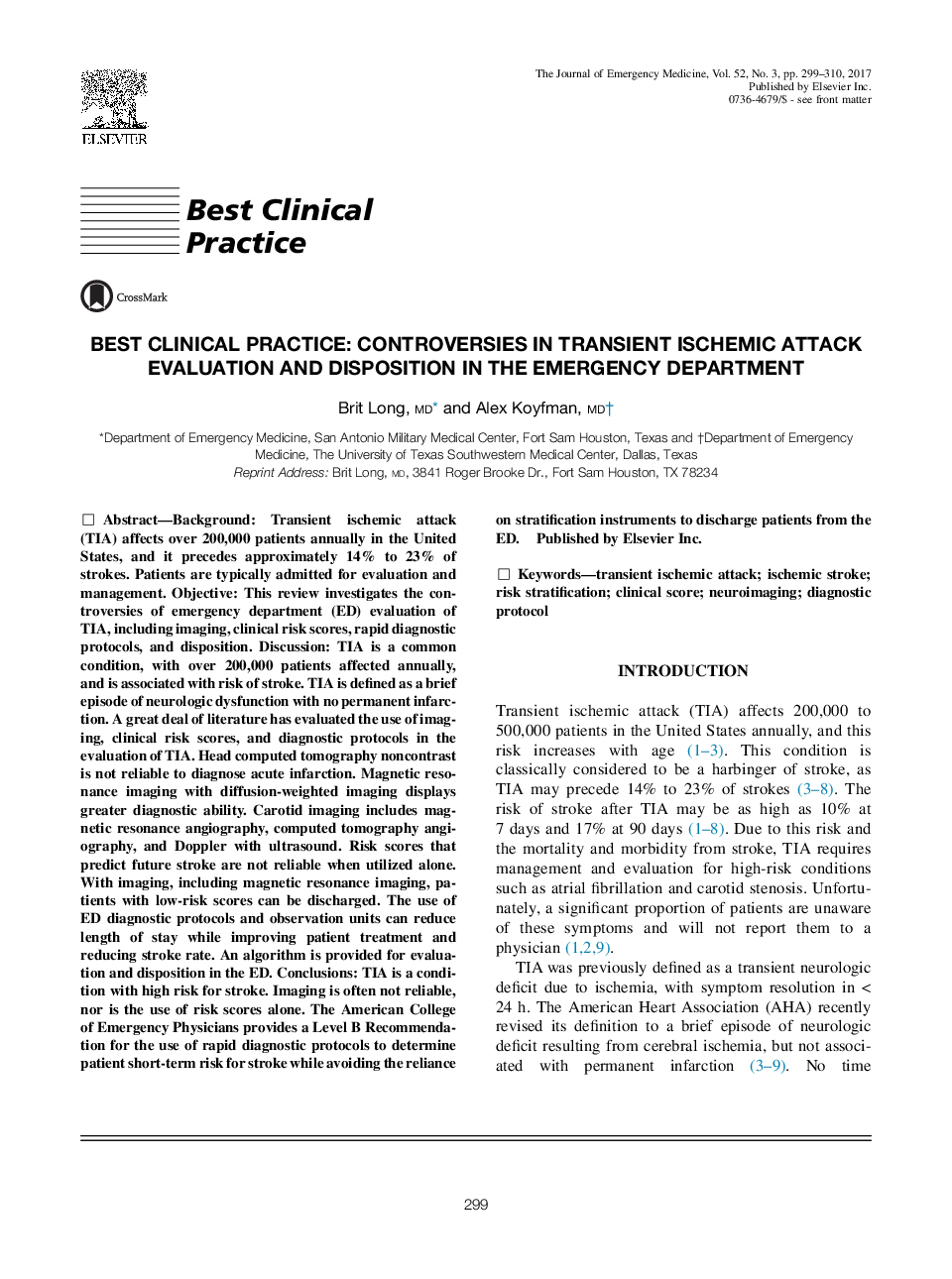| کد مقاله | کد نشریه | سال انتشار | مقاله انگلیسی | نسخه تمام متن |
|---|---|---|---|---|
| 5653697 | 1589103 | 2017 | 12 صفحه PDF | دانلود رایگان |
BackgroundTransient ischemic attack (TIA) affects over 200,000 patients annually in the United States, and it precedes approximately 14% to 23% of strokes. Patients are typically admitted for evaluation and management.ObjectiveThis review investigates the controversies of emergency department (ED) evaluation of TIA, including imaging, clinical risk scores, rapid diagnostic protocols, and disposition.DiscussionTIA is a common condition, with over 200,000 patients affected annually, and is associated with risk of stroke. TIA is defined as a brief episode of neurologic dysfunction with no permanent infarction. A great deal of literature has evaluated the use of imaging, clinical risk scores, and diagnostic protocols in the evaluation of TIA. Head computed tomography noncontrast is not reliable to diagnose acute infarction. Magnetic resonance imaging with diffusion-weighted imaging displays greater diagnostic ability. Carotid imaging includes magnetic resonance angiography, computed tomography angiography, and Doppler with ultrasound. Risk scores that predict future stroke are not reliable when utilized alone. With imaging, including magnetic resonance imaging, patients with low-risk scores can be discharged. The use of ED diagnostic protocols and observation units can reduce length of stay while improving patient treatment and reducing stroke rate. An algorithm is provided for evaluation and disposition in the ED.ConclusionsTIA is a condition with high risk for stroke. Imaging is often not reliable, nor is the use of risk scores alone. The American College of Emergency Physicians provides a Level B Recommendation for the use of rapid diagnostic protocols to determine patient short-term risk for stroke while avoiding the reliance on stratification instruments to discharge patients from the ED.
Journal: The Journal of Emergency Medicine - Volume 52, Issue 3, March 2017, Pages 299-310
